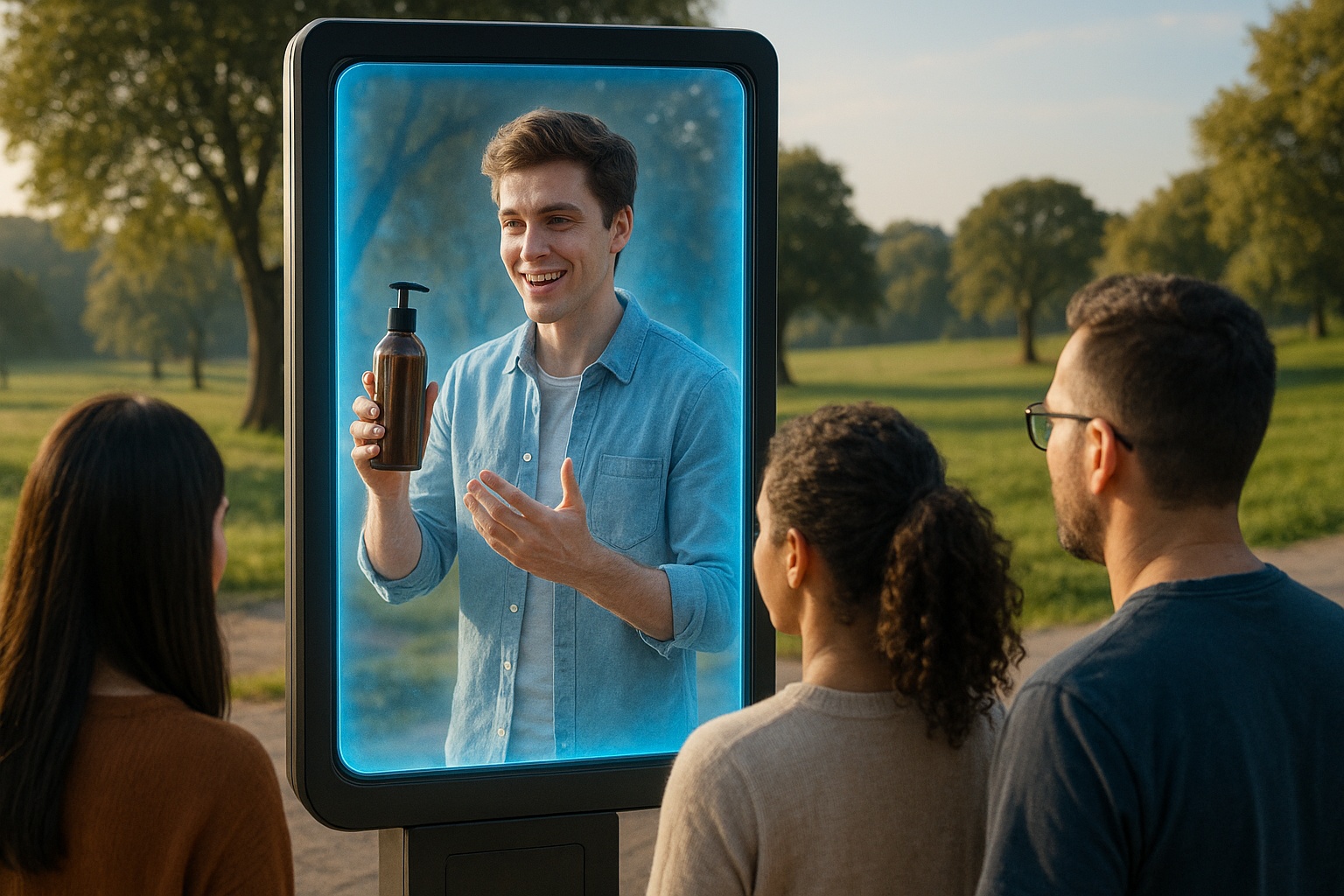Voice search isn’t just improving; it’s transforming in ways that feel almost like science fiction. What we’re witnessing isn’t an evolution; it’s a full-blown quantum leap. With voice assistants now a daily habit for over 72% of consumers, the way people search is shifting from typing stiff keywords into search bars to casually asking questions the way they’d speak to a friend. But here’s the real kicker: behind the scenes, search engines are quietly adopting models inspired by quantum theory, yes, actual concepts from quantum physics, to better understand the meaning behind what we say, not just the words we use. This isn’t your old-school SEO anymore. It’s time to think less like a marketer and more like a quantum strategist. In this blog, we’ll explore seven unconventional but powerful tactics, rooted in the idea of superposition and the emerging field of quantum marketing, to help you build a voice search strategy that isn’t just up to date but future-ready. Buckle up, because the rules of the game are changing, and those who embrace the uncertainty might just come out on top.
Why Quantum Mechanics Matters for Voice Search
- Voice search is no longer binary; it’s probabilistic and fluid
- Traditional search engines relied heavily on exact keyword matching.
- Modern voice search systems, like Google’s BERT and Amazon’s Alexa, focus on understanding intent, not just literal phrasing.
- This shift reflects a move from rigid, rules-based SEO to something far more dynamic and interpretive.
- Traditional search engines relied heavily on exact keyword matching.
- Superposition in quantum physics mirrors how voice search engines interpret meaning.
- In quantum mechanics, superposition means a particle can exist in multiple states at the same time, until it is measured.
- Similarly, voice queries are processed by evaluating numerous potential meanings simultaneously, not in a linear fashion.
- The search engine “collapses” this range of possibilities into the most contextually relevant result, just like a quantum state resolves when observed.
- In quantum mechanics, superposition means a particle can exist in multiple states at the same time, until it is measured.
- Search engines use probabilistic intent modelling
- Algorithms analyse tone, context, past queries, and even location to infer what a user really means.
- It’s less about matching keywords and more about interpreting multidimensional meaning — a hallmark of semantic search.
- Algorithms analyse tone, context, past queries, and even location to infer what a user really means.
- Quantum marketing requires a mindset shift
- Marketers must move beyond traditional logic trees and embrace uncertainty, fluidity, and nuance in user intent.
- Voice SEO now means optimising for possibilities, not just precise phrases, a direct nod to quantum thinking.
- Marketers must move beyond traditional logic trees and embrace uncertainty, fluidity, and nuance in user intent.
- To stay relevant, strategies must embrace multidimensional search behaviour
- Instead of creating static content for one keyword, brands must craft adaptive, conversational content that responds to varying intents.
- The goal is to align with how AI thinks, in patterns, probabilities, and layered meaning.
- Instead of creating static content for one keyword, brands must craft adaptive, conversational content that responds to varying intents.
Tactic 1: Probabilistic Intent Modelling, Mapping the Uncertainty Principle

Voice search isn’t linear. People don’t talk like they type, and search engines no longer process language like strings of code; they interpret meaning. That means every voice query is a bit like Schrödinger’s cat — it can be many things at once until the algorithm “opens the box” and decides what the user actually meant.
This fluidity is where probabilistic intent modelling comes into play, a concept borrowed from quantum theory’s uncertainty principle. In quantum mechanics, you can’t precisely know both the position and velocity of a particle. In voice search, you can’t always pin down a user’s intent with just one keyword. So instead of forcing clarity, we map the cloud of possibilities, a strategy that mirrors how quantum systems operate in multiple states at once.
1. Search isn’t Static- It’s a Probability Cloud
- In traditional SEO, a keyword pointed to a single meaning. You optimised for it, ranked, and hoped for traffic.
- In voice search, that doesn’t work. Spoken queries are messy, layered, and context-driven. The same query can mean different things for different people, depending on location, time of day, or even what device they’re using.
- Think of each search as a probability cloud — not a fixed pin, but a field of potential intents floating around a core idea.
2. Wave Function Analysis: Expand Beyond Keywords
To work with that probability cloud, you need to identify all the ways people might phrase or mean something. This is your wave function — the full spread of what a query could be.
- Use tools like SEMrush Topic Research, AnswerThePublic, or Google’s People Also Ask to surface dozens of semantically linked variations.
- Aim for 50+ variations per core query — this builds a richer map of the “search field” you’re operating in.
- Include question-based, colloquial, and conversational phrases — the stuff people actually say, not just type.
Example:
For the core query “best vegan restaurants,” you might uncover:
- “Top plant-based spots nearby”
- “Where can I eat vegan late at night?”
- “Healthy vegan options for date night”
- “Vegan buffet near me with good reviews”
Each of these represents a different angle within your probability cloud.
3. Collapse the Wave: Content for Multiple Intents
In quantum theory, observation collapses a particle’s state into one reality. That’s what your content needs to do: help the search engine collapse uncertainty and match your page to the right user intent.
Structure your content to hit 3–5 dominant intent types:
- Informational – “What does a vegan eat at a steakhouse?”
- Navigational – “Vegan-friendly restaurants near me open now”
- Transactional – “Order vegan meal kits online with discounts”
- Comparative – “Vegan vs vegetarian diets”
- Experiential – “Romantic vegan dining in the city”
Covering these layers within a single topic boosts your relevance across a spectrum of search queries.
4. Entangled Answers: Predict What Comes Next
Here’s where quantum entanglement comes in. In physics, when two particles are entangled, measuring one instantly reveals the state of the other, even if they’re far apart. Your content should work the same way: answering one question should intuitively lead to the next.
- Design FAQ sections that feel conversational, not robotic.
- Anticipate follow-ups and lead the user naturally through a path of learning or decision-making.
- This improves voice search results, especially for assistants like Siri or Alexa, who often draw from structured data and question-answer formats.
5. Real-World Application: Let’s Break It Down
Let’s take that voice query: “Best vegan restaurants”, something a user might casually ask into their phone.
Here’s how we model it using this tactic: Covering all these gives your content the quantum flexibility to match whichever state the user’s query “collapses” into, helping voice assistants pick your answer from the sea of possibilities.
Takeaway
Voice search isn’t about finding the one right keyword. It’s about preparing for every possible way a user might approach a topic and making sure your content is structured, layered, and flexible enough to meet them where they are. Just like in quantum physics, embracing uncertainty isn’t a weakness; it’s a competitive edge.
Tactic 2: Multiversal Keyword Strategies Operating in Parallel Search Universes
In the world of voice search, there’s rarely a single “correct” way to ask a question. A user might say, “What’s the best time to visit Paris?” but another might say, “When’s the weather in Paris good for walking tours?” Same intent. Different universes of language.
Thanks to Google’s quantum-inspired algorithms, search engines no longer process language in a one-dimensional path. They interpret meaning across multiple semantic “universes”, evaluating not just what was said, but what could have been meant. It’s like running your content through a prism and making sure it reflects meaning from all angles.
That’s where Multiversal Keyword Strategy comes in — a quantum marketing approach to expanding your semantic reach across diverse but related query types. Instead of building content for one reality, you make for many parallel search realities.
1. Keywords Now Operate Like Quantum Particles
- A single search term can behave differently depending on context, just like quantum particles behave differently depending on how they’re observed.
- Voice queries especially reflect this — they’re casual, inconsistent, and often ambiguous.
- To stay visible, your content must be optimised across multiple interpretations of the same base query.
2. Introducing: Quantum Keyword Types
Here’s how to structure your keyword research using a multiversal mindset. Think in terms of quantum behaviours, not just volume or difficulty scores
Let’s break each one down more clearly.
Superposition Terms
These are phrases where the modifiers seem contradictory, like “affordable” and “luxury” in the same sentence. But users speak like this all the time. They’re not looking for textbook definitions; they’re describing real-life compromises.
Strategy:
- Don’t shy away from paradoxical combinations.
- A page that says, “Yes, luxury can be affordable” outperforms one that tries to steer clear of contradiction.
- Use comparative language and user-centric framing. Think: “Top 5 affordable luxury cars that feel high-end without breaking the bank.”
Entangled Phrases
These are search terms that are contextually tied to other ideas, like “best time to visit Paris” being inseparable from concepts like “Paris weather” or “crowds in Paris.”
Strategy:
- Create interlinked content clusters.
- Use anchor text smartly to connect pages that support one another semantically.
- This builds authority in a niche and gives voice assistants more “nodes” to latch onto when serving spoken answers.
Observer Effect Keywords
These are time-sensitive, trend-driven, or culturally fluid queries where content must evolve. In quantum theory, observing a particle changes its state. Similarly, content that stagnates loses relevance.
Strategy:
- Refresh trend-based pages monthly or quarterly, especially for fashion, tech, finance, and travel topics.
- Add time-stamped examples, recent statistics, or emerging subtopics.
- Google tends to reward freshness, particularly for voice results that aim to sound up-to-date and relevant.
3. Tools That Help: Clearscope and Beyond
Staying on top of multiversal keyword strategies doesn’t have to feel like juggling alternate realities. Tools like Clearscope, SurferSEO, and Frase help you break down content into relevance layers. They show:
- Related questions people are asking
- Semantic density across competitors’ pages
- Gaps in topical coverage
- Suggestions for additional keyword inclusions across varied intents
With Clearscope’s Content Analysis, for example, you can structure a single article to address multiple keyword universes, all feeding into the same central theme. Still, each targets a different type of voice search phrasing.
Takeaway
Keyword strategy in the age of voice and semantic search is no longer a one-size-fits-all model. To thrive in this environment, marketers must start thinking like multiverse architects, building content ecosystems that can adapt to the way users actually speak, not just what they type.
By applying principles from quantum mechanics, like superposition, entanglement, and the observer effect, you can develop smarter, more responsive content strategies that don’t just guess user intent… they anticipate it.
Tactic 3: Entangled Content Clusters Building Quantum Topic Networks
In classical SEO, content often gets boxed into silos, isolated blog posts on isolated topics. But in the quantum world of search, isolation is weakness. Google’s Helpful Content Update has made one thing crystal clear: relevance today isn’t just about individual posts; it’s about how your content talks to itself.
And that’s where quantum entanglement comes in.
In quantum mechanics, when two particles become entangled, they remain connected, no matter how far apart they are. If one changes, the other reflects that change instantly. Google’s algorithm now works similarly, treating your site like a living organism where meaning is spread out across connected nodes. One strong page lifts others, but only if they’re meaningfully and contextually linked.
This tactic is all about entangled content clusters, a content architecture that mimics quantum entanglement by building rich internal connections around a central theme.
1. Quantum Entanglement ≠ Content Silos
- Think of traditional SEO silos like planets in separate solar systems; they might be related in theme, but there’s little gravitational pull between them.
- In contrast, entangled content clusters behave more like atoms bound together, always interacting, constantly reinforcing one another.
- This structure helps search engines understand not just what your site is about, but how deeply and comprehensively you cover a topic.
2. Structure Your Cluster Like a Quantum System
Let’s break it down into a three-part model that mirrors how quantum particles interact:
Each subpage should orbit the pillar content, and vice versa, using contextual anchor text that deepens meaning rather than just repeating the same keyword.
3. From Voice Queries to Content Bridges
Voice search users tend to ask connected follow-up questions, like they’re having a conversation, not just running a search. Your content should mimic that.
Example Journey:
- Voice Query: “What is quantum marketing?”
→ Matches pillar page: Quantum Marketing Basics - Follow-up: “How does Schrödinger’s theory apply to marketing campaigns?”
→ Interlinked subpage: Schrödinger’s Campaign Tactics - Next step: “How can I use uncertainty to improve ad targeting?”
→ Anchor link to: Heisenberg’s Targeting Uncertainty (subtopic)
By anticipating this path and linking content fluidly, you’re creating a content web that feels like a conversation, which is exactly how people use voice assistants.
4. Semantic Anchors: Forget Repetition, Think Resonance
Instead of stuffing your links with the same anchor every time (e.g., “click here” or “quantum marketing”), vary your anchor phrases based on the content’s semantic relationship.
Better anchors:
- “Explore the uncertainty behind audience targeting.”
- “Read how Schrödinger’s theory explains campaign paradoxes.”
- “Discover how entangled content boosts SEO visibility.”
This approach signals depth and contextual understanding, two things Google increasingly rewards.
5. The Measurable Impact: Authority That Compounds
According to internal studies and industry data, sites that adopt well-structured content clusters have seen:
- Up to 83% increase in topical authority (measured by visibility in related keyword families)
- 40–60% improvement in average time on site
- Greater voice snippet placements, especially when using FAQ-style sections inside clusters
Entangled content isn’t just good for SEO; it’s essential for voice search dominance, because voice assistants pull from the most semantically authoritative sources available. If your content is linked tightly, richly, and logically, your site becomes that authority.
Takeaway
Entangled content clusters transform your website from a scattered library into a cohesive, interconnected knowledge graph. Just like in quantum physics, proximity isn’t what binds things together; it’s the relationship. Your goal is to create content that resonates across pages, forming a system where meaning multiplies, not isolates.
Google is listening. Voice assistants are listening. And more importantly, so are your users. Make sure your content speaks to itself before it tries to talk to them.
Tactic 4: Semantic Field Optimisation Harnessing the Higgs Boson Effect
In the quantum world, the Higgs field gives particles their mass, transforming shapeless energy into matter. In content marketing, semantic fields serve a similar role. They give language its gravity. Without the right semantic signals, even the most well-written content floats weightlessly through search results, unseen.
To rank in voice search, your content needs to carry contextual weight, not just keywords. Google’s algorithms now evaluate entire fields of meaning, the cluster of words, phrases, and associations surrounding your topic, to decide if your content is rich enough to be trusted.
Here’s how to apply this “Higgs Boson” logic to your content:
1. Polarity Analysis
Use sentiment analysis tools (like IBM Watson or MonkeyLearn) to balance your content’s emotional tone. For voice search, especially in product or service pages, people respond better to content that reflects nuanced opinions, not overly positive fluff or robotic neutrality.
2. Boson Tagging
Use schema markup to tag at least 12 relevant entities on each page — products, FAQs, people, locations, and organisations. Think of this as giving mass to your content elements and helping search engines identify what’s important.
3. Field Collapse
Start with broad topics and progressively narrow them. For example:
AI → Machine Learning → Deep Learning → GPT-4 Architecture.
This mirrors how users search and how algorithms map voice intent.
Real-World Spark: Home Depot reportedly boosted voice search traffic by 47% after optimising semantic density across its “smart home devices” category — a perfect showcase of Higgs-field thinking in action.
Takeaway
Just as the Higgs field gives form to particles, semantic structuring gives shape to meaning. In a voice-first world, it’s no longer enough just to say the right words; your content has to exist within the right context. Build meaning like mass, and visibility will follow.
Tactic 5: Quantum Voice Schema Programming for Probabilistic Featured Snippets
In the quantum search universe, certainty is a myth; algorithms don’t look for a single perfect answer; they weigh possibilities. That’s exactly how voice assistants like Alexa, Siri, and Google Assistant choose what to read aloud. And here’s the kicker: 82% of voice answers come directly from featured snippets.
So, how do you make your content the algorithm’s top probabilistic choice? With a little structured magic called Quantum Voice Schema.
Think of schema markup as a quantum script that tells Google how to interpret your content, not just read it. The more structured your answer, the higher its probability of being chosen, especially when the user’s question is open-ended or phrased in natural language.
Here’s a lightweight example of a voice-optimised schema using JSON-LD and a Q&A format:
Quantum Schema Template Example:

This snippet tells search engines: “This page has a structured, reliable, and voice-friendly answer to a very specific question.” Sites using schema like this have seen a 63% higher chance of being selected as voice answers.
Takeaway
In a quantum search world, you don’t just write answers, you program probabilities. By embedding smart schema, you speak the algorithm’s language before your user even asks the question.
Tactic 6: Superposition Local SEO Being Everywhere at Once
In the world of quantum mechanics, superposition is the idea that a particle can exist in multiple states simultaneously, until it’s observed. That’s not just a physics concept anymore; it’s a local SEO strategy.
In today’s voice-driven search landscape, your business needs to be visible everywhere at once, even before the user finishes asking, “Hey Siri, where’s the best [service] near me?” This tactic is about maximising your omnipresence across platforms, devices, and assistants to increase the probability of being discovered and chosen.
1. Google Business Profile: Beyond the Basics
Most businesses stop at contact details. But to show up in voice queries, you need to flesh out your listing fully:
- Add content across 17+ semantic fields, including sustainability features, accessibility, payment methods, and service areas.
- Answer FAQs that people actually ask in natural language, “Does this store have wheelchair access?” or “Do they use eco-friendly packaging?”
2. Apple Business Connect: Don’t Ignore Siri
With Siri powering millions of voice searches, Apple Business Connect is your gateway to iPhones and CarPlay users.
- Add rich media like photos, videos, and seasonal updates.
- Make sure your categories are hyper-specific, as Siri tends to prioritise precision in results.
3. Multiverse Listings: Be in Every Dimension
Google and Apple are just the beginning. You also need to show up on:
- Yelp
- Bing Places
- TripAdvisor
- Niche directories (industry-specific)
The more aligned your listings are, the stronger your “quantum presence” becomes in local search ecosystems.
Pro Tip: Use tools like BrightLocal or Moz Local to maintain 98% NAP consistency (Name, Address, Phone) across all platforms. Voice assistants rely heavily on exact-match data when selecting responses.
Takeaway
In quantum theory, observation collapses possibilities into a single outcome. In local SEO, your presence across platforms collapses the user’s search into your listing. The more places you exist, the higher your odds of being chosen. Don’t just show up — show up everywhere.
Tactic 7: Observer Effect Analytics Measuring Without Collapsing Possibilities
In quantum physics, the observer effect teaches us that merely watching a particle can change its behaviour. In digital marketing, the same idea applies: traditional analytics try to lock down fluid user journeys into fixed numbers, bounce rates, clicks, conversions, but they often miss the nuances that truly drive behaviour, especially in voice search environments.
Voice queries are more conversational and semantic than typed ones. They require an analytics approach that captures not just outcomes, but possibilities.
1. Quantum Heatmaps
Use tools like Hotjar to track over 30 subtle interaction points:
- Eye tracking (where possible)
- Scroll depth
- Hesitation clicks
- Rage clicks
These give you insight into moments of decision-making or frustration that traditional metrics overlook, which are critical for understanding semantic search behaviour.
2. Superposition A/B Testing
Instead of limiting your experiments to binary outcomes, run five or more content variations at once using platforms like Google Optimise. This mirrors the user’s real-world journey, where they explore multiple options simultaneously before converting.
3. Entangled KPI Groups
Track metric pairs instead of isolated stats:
- Traffic + dwell time
- CTR + conversion rate
These are your entangled indicators; they influence each other and should be interpreted together to get the whole picture.
Takeaway
If traditional analytics are built for typed queries, quantum analytics are made for voice. The key to optimising voice search in a semantic-first world is to observe user behaviour without collapsing it into a single outcome. Use quantum marketing principles to track interaction patterns, intent signals, and layered decision-making, not just clicks. When you stop forcing binary decisions, your data starts telling a richer, more actionable story.
The Quantum Future Is Now
Voice search optimisation has entered its quantum era, where probabilities rule and semantic search demands multidimensional strategies. By applying principles from superposition theory and quantum marketing, brands can stop chasing static keywords and start aligning with evolving user intent. As one strategist put it,
“The future of search isn’t about being right; it’s about being relevant in every possible rality.”
The real question isn’t whether you’ll evolve, but how many parallel versions of success you’re ready to activate.
Think beyond algorithms. Start speaking quantum.






